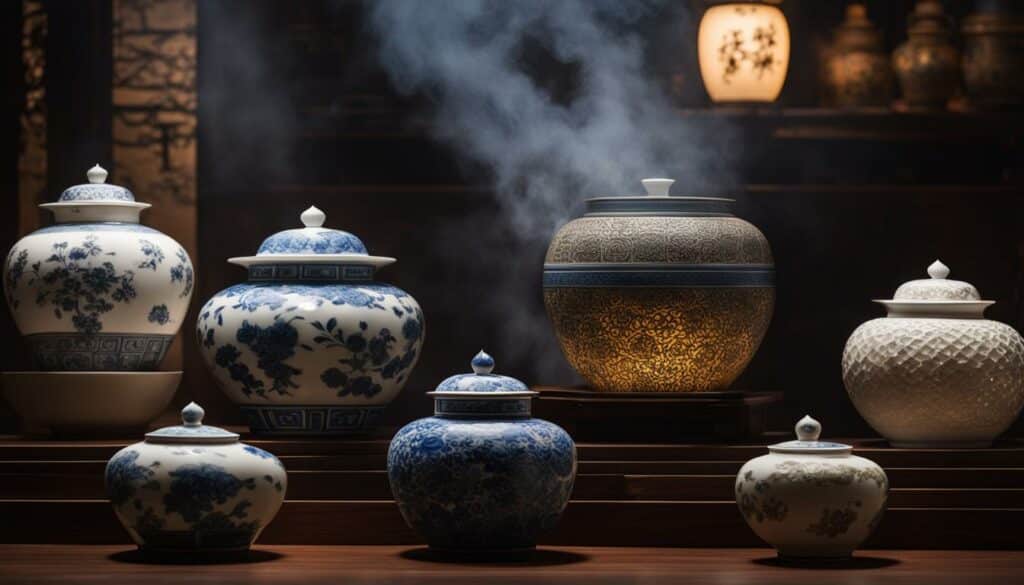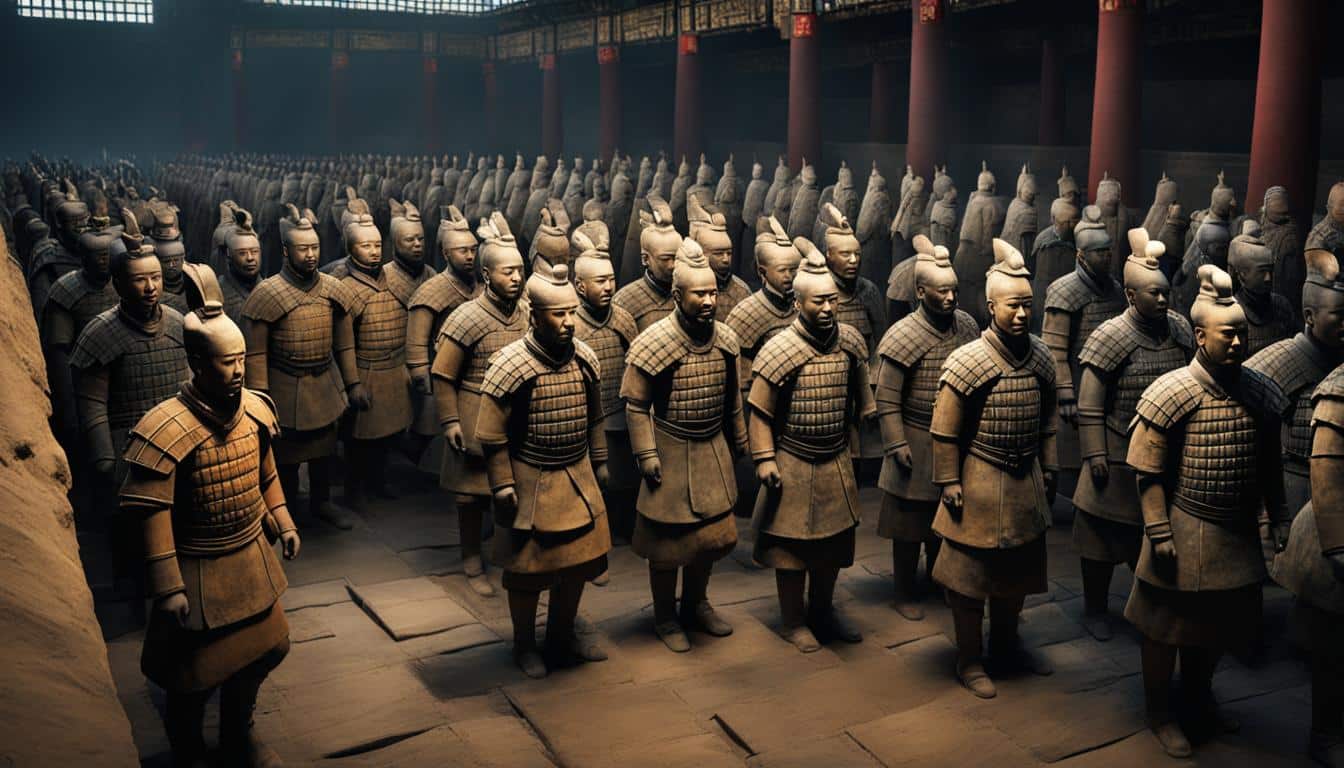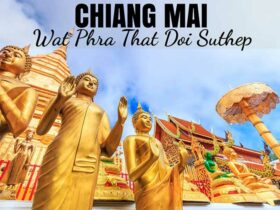The tomb of the first Qin Emperor, located in the Shaanxi Province of China, is one of the most significant archaeological discoveries of our time. The tomb was discovered in 1974 by a group of farmers who stumbled upon the site while digging a well. What they uncovered was a vast underground palace filled with thousands of life-sized terracotta soldiers, horses, and chariots. The tomb also contained numerous other ancient Chinese artifacts that shed light on the beliefs, customs, and technology of the time.
In this article, we will take an in-depth look inside the tomb of the first Qin Emperor and explore the fascinating discoveries that were made within. From the intricate details of the terracotta army to the opulence of the underground palace, we will uncover the wonders of this ancient burial site and the insights it provides into the history of ancient China.
Key Takeaways:
- The tomb of the first Qin Emperor is one of the most significant archaeological discoveries of our time.
- The tomb contains a vast underground palace filled with thousands of life-sized terracotta soldiers, horses, and chariots.
- The tomb also contains numerous other ancient Chinese artifacts that shed light on the beliefs, customs, and technology of the time.
- Exploring the tomb provides valuable insights into the history of ancient China.
- The legacy of the first Qin Emperor’s tomb continues to impact cultural heritage, archaeology, and our broader knowledge of the Qin Dynasty.
The Qin Dynasty and its Imperial Burial Site
The Qin Dynasty was one of the most significant and influential dynasties in ancient Chinese civilization, ruling from 221 to 206 BCE. It was during this time that the first emperor of China, Qin Shi Huang, built his imperial burial site, which would later become one of the most remarkable archaeological discoveries in human history.
The imperial burial site of the first Qin Emperor was an enormous complex covering an area of approximately 56 square kilometers, containing numerous underground tombs and artifacts. The entire construction process took over 38 years and involved thousands of laborers and craftsmen. The scale and complexity of the project reflects the power and beliefs that the first Qin Emperor held, as well as the significant resources at his disposal.
Architecture of the Imperial Burial Site
The imperial burial site of the first Qin Emperor was constructed with a high level of sophistication and precision, utilizing the latest technological advancements and architectural techniques of the time.
| Features of the Burial Site | Description |
|---|---|
| Underground Palace | A vast underground palace was constructed to house the tomb of the first Qin Emperor, containing numerous chambers, corridors, and intricate artwork. |
| Outer City | The outer city was constructed with fortified walls and gates, serving as the first line of defense for the tomb and housing the residences of the imperial guards and other workers. |
| Inner City | The inner city was the administrative and ceremonial center of the tomb complex, containing a number of important buildings such as the Hall of the Five Hundred Officials and the Hall of Great Accomplishment. |
The architectural achievements of the imperial burial site of the first Qin Emperor demonstrate the advanced skills and knowledge of the builders and architects of the time, as well as the great importance placed on the burial practices and beliefs of ancient Chinese civilization.
Unveiling the Terracotta Army
One of the most remarkable discoveries inside the tomb of the first Qin Emperor is the Terracotta Army, which was found in pits surrounding the burial mound. The army is a collection of life-sized terracotta sculptures of soldiers, horses, and chariots that were meant to accompany and protect the emperor in the afterlife.
The Terracotta Army is a testament to the advanced level of artistry and technology of ancient China. The soldiers are all unique, with individualized facial features, hairstyles, and armor. Furthermore, the horses and chariots are intricately designed, with lifelike proportions and details.
The Terracotta Army is an archaeological marvel, representing a significant breakthrough in the study of ancient Chinese artifacts. Its discovery has shed light on the military prowess and belief systems of the Qin Dynasty. It is a testament to the importance of the afterlife and the idea that the emperor would need an army to protect him in the next world.
The Purpose of the Terracotta Army
The Terracotta Army was created for a specific purpose – to protect the first Qin Emperor in the afterlife. The belief was that the emperor would continue to rule his empire even after death, and he needed an army to protect him from any possible enemies.
The Terracotta Army was buried with the emperor in separate pits, with each pit containing different types of soldiers and horses. The soldiers were arranged in battle formations, ready to defend the emperor at a moment’s notice.
Archaeological Discoveries
The discovery of the Terracotta Army was a significant archaeological breakthrough, providing valuable insights into the customs and beliefs of the Qin Dynasty. The excavation of the army has led to the discovery of other valuable artifacts, including weapons, pottery, and even a bronze chariot.
The intricate details and high level of artistic skill showcased by the Terracotta Army and other artifacts found in the tomb are evidence of the technological advancements and cultural richness of ancient China.
The Terracotta Army remains one of the most significant archaeological discoveries of our time, providing valuable insights into ancient Chinese civilization and history. The craftsmanship and intricate details of the sculptures are a tribute to the skill and creativity of the artisans of the Qin Dynasty, and a testament to the power and beliefs of the first Qin Emperor.
Exploring the Underground Palace
Upon entering the subterranean palace, archaeologists were awestruck by its grandeur and opulence. The palace was designed to be a replica of the first Qin Emperor’s imperial palace, complete with halls, chambers, and courtyards. The layout was carefully planned, with passageways leading to various rooms and underground chambers.
The walls of the palace were decorated with beautiful murals and frescoes, depicting scenes of ancient Chinese life and culture. The intricate artwork showcased the skill and craftsmanship of the artisans of the time.
The underground palace was also home to a vast array of ancient Chinese artifacts, including pottery, jade figurines, bronze vessels, and other treasures. These historical treasures provided valuable insights into the customs, beliefs, and artistic styles of ancient China. The artifacts were so numerous that it took years to catalog and study them all.
One of the most remarkable discoveries within the underground palace was a collection of over 100 life-sized bronze statues. These statues were crafted to represent the officials, soldiers, and entertainers of the time. The intricate details of the statues showcased the remarkable skill of the artisans who created them.
“The underground palace was truly a wonder of ancient Chinese architecture and art. The treasures that were discovered within its walls shed light on the customs, beliefs, and technological advancements of the time, providing a window into the rich cultural heritage of the Qin Dynasty,” said lead archaeologist, Li Xiaojie.
The exploration of the underground palace has expanded our understanding of ancient Chinese civilization and the power and influence of the first Qin Emperor. The historical treasures that were discovered within its walls continue to fascinate and intrigue scholars and visitors alike, revealing glimpses into a world that existed over 2,000 years ago.
Artifacts and Relics: Glimpses into Ancient China
A visit to the tomb of the first Qin Emperor is like traveling back in time to ancient China. The discovery of the tomb has provided historians with valuable insights into the customs, traditions, and technological advancements of the era. The artifacts and relics found within the tomb offer a glimpse into the daily lives of the people of the Qin Dynasty, providing important clues about their beliefs, values, and social structures.
Among the most remarkable discoveries are the terracotta soldiers, which are life-sized statues representing the army of the first Qin Emperor. These sculptures were designed to protect the emperor in the afterlife and were buried with him in his tomb. The terracotta army was discovered by a group of farmers in 1974, and it has since become one of the most famous archaeological discoveries of all time.

Other artifacts found within the tomb include pottery, jewelry, weapons, and other items that shed light on the culture and daily lives of the people of the Qin Dynasty. These items were intricately crafted, reflecting the advanced skills of the artisans of the time. The pottery, in particular, is notable for its intricate designs and glazes, which showcase the aesthetic values of the period.
One of the most notable relics found within the tomb is the jade armor of the first Qin Emperor. Made from thousands of pieces of jade, this armor is a testament to the wealth and power of the emperor, who spared no expense in ensuring his afterlife was as lavish as his life on earth. The armor is a stunning example of the exquisite craftsmanship of the period.
The Value of These Discoveries
The discovery of the tomb of the first Qin Emperor and the artifacts and relics found within have been of immense value to historians, archaeologists, and cultural enthusiasts. These discoveries have provided us with a window into the past and have helped shed light on the culture, beliefs, and traditions of ancient China. They have also helped us understand the technological advancements of the period and the skills of the artisans who crafted these intricate treasures.
Moreover, the discoveries have helped us appreciate the beauty and cultural richness of ancient Chinese civilization. It is remarkable to think that these artifacts and relics have survived for thousands of years and have now been rediscovered for the world to see. They serve as a testament to the ingenuity and creativity of the people of the past and as a reminder of the enduring legacy of the Qin Dynasty.
The Legacy of the First Qin Emperor’s Tomb
The discovery of the tomb of the first Qin Emperor has had a lasting impact on our understanding of ancient Chinese civilization and history. It has shed light on the customs, traditions, and technological advancements of the time, providing valuable insights into the Qin Dynasty.
The tomb is a testament to the power and beliefs of the first Qin Emperor, showcasing the opulence and extravagance associated with the imperial burial site. It also highlights the importance of ancient Chinese artifacts, which are vital historical treasures that help us piece together the culture and society of the past.
The terracotta army, the underground palace, and the various other artifacts and relics found within the tomb have all contributed to our understanding of ancient China. They provide tangible evidence of the power and influence of the Qin Dynasty, as well as the advanced artistic and technical capabilities of the time.
| Insight | Evidence from the tomb |
|---|---|
| The Qin Dynasty was a powerful empire with a sophisticated bureaucratic system. | The layout of the tomb, as well as the artifacts within it, suggest a highly organized and hierarchical society. |
| The first Qin Emperor was a military leader with a strong interest in unification. | The terracotta army and other military artifacts suggest a focus on warfare and conquest. |
| Ancient Chinese artisans were highly skilled and capable of producing intricate and lifelike sculptures. | The terracotta army is a prime example of the advanced artistic capabilities of the time. |
The tomb has also had a broader impact on cultural heritage and archaeology. It has prompted further exploration and preservation efforts, as well as deepened our understanding of ancient Chinese burial practices.
Overall, the tomb of the first Qin Emperor is a remarkable historical treasure that continues to provide valuable insights into the past. It is a testament to the power and influence of the Qin Dynasty, as well as the artistic and technical achievements of ancient Chinese civilization.
Discovering the Mystical Lungshan Temple Taiwan: A Must-Visit
Conclusion
Exploring the tomb of the first Qin Emperor has revealed a wealth of fascinating information about ancient Chinese civilization. The discovery of the terracotta army, the underground palace, and a variety of artifacts and relics has given us valuable insights into the customs, traditions, and technological advancements of the time.
The Qin Dynasty, with its imperial burial site, was a reflection of the power and beliefs of the first Qin Emperor. Its opulent design showcased the extravagance and luxuriousness of the emperor’s reign.
Archaeological discoveries within the tomb have made significant contributions to our knowledge of the Qin Dynasty and Chinese history, illuminating the cultural heritage of this ancient civilization.
Impact on Cultural Heritage
The discovery of the tomb and its contents has had a profound impact on cultural heritage. The terracotta army, in particular, has become one of the most famous ancient Chinese artifacts and a symbol of the country’s rich cultural heritage.
The excavation of the tomb and the preservation of its contents have also paved the way for future archaeological discoveries and research, helping to deepen our understanding of the ancient Chinese civilization.
Legacy of the First Qin Emperor’s Tomb
The first Qin Emperor’s tomb and its contents have left a lasting legacy that extends beyond the realm of archaeology and ancient history.
The discoveries made in the tomb have inspired countless artists, writers, and filmmakers, contributing to the popular imagination of ancient China.
The impact of the tomb on tourism in China cannot be overstated, as it remains one of the most visited cultural heritage sites in the world.
Final Thoughts
The exploration of the tomb of the first Qin Emperor has given us a glimpse into an ancient Chinese civilization that continues to fascinate and intrigue us to this day. The terracotta army, the underground palace, and the various artifacts and relics discovered within the tomb represent a unique and invaluable contribution to the world’s cultural heritage.
Thanks to the ongoing efforts of archaeologists and preservationists, we can continue to learn from and appreciate this remarkable piece of history for generations to come.
FAQ
What was found in the tomb of the first Qin Emperor?
The tomb of the first Qin Emperor, also known as Emperor Qin Shi Huang, contained a vast array of artifacts and treasures. Some of the most notable findings include the famous Terracotta Army, ancient Chinese pottery, jewelry, weapons, and other artifacts that provide valuable insights into the customs and traditions of ancient China.
What is the Terracotta Army?
The Terracotta Army is a collection of life-sized sculptures that were found within the tomb of the first Qin Emperor. The army consists of thousands of terracotta soldiers, horses, and chariots, each with unique facial features and intricate details. It was created to accompany the emperor in the afterlife and is considered one of the most significant archaeological discoveries in history.
What is the significance of the imperial burial site?
The imperial burial site of the first Qin Emperor holds immense historical and cultural significance. It represents the power and beliefs of the Qin Dynasty and provides valuable insights into ancient Chinese civilization. The construction of such an elaborate burial site showcases the wealth, opulence, and the emperor’s desire for an immortal legacy.
What was discovered in the underground palace?
The underground palace within the tomb of the first Qin Emperor revealed remarkable architectural marvels, intricate artwork, and historical treasures. It provided a glimpse into the lavishness and grandeur of the burial site, showcasing the emperor’s desire for an elaborate afterlife. The underground palace is also home to various artifacts that shed light on the customs and traditions of ancient China.
What kind of artifacts and relics were found in the tomb?
The tomb of the first Qin Emperor contained a vast array of artifacts and relics that provided valuable insights into ancient Chinese civilization. These included pottery, jewelry, weapons, and other items that showcased the technological advancements, artistic skills, and cultural practices of the time. The artifacts found in the tomb provide a tangible link to the past and enhance our understanding of ancient China.
What is the legacy of the first Qin Emperor’s tomb?
The discovery of the first Qin Emperor’s tomb has had a profound impact on our understanding of ancient Chinese history. It has significantly contributed to our knowledge of the Qin Dynasty, ancient Chinese art and culture, and the legacy of the emperor himself. The findings from the tomb continue to shape our understanding of ancient civilizations and serve as a reminder of the rich history and heritage of China.














Got a Questions?
Find us on Socials or Contact us and we’ll get back to you as soon as possible.